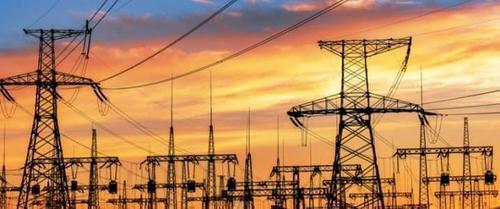Europe's Unforeseen Renewables Problem
Authored by Irina Slav via OilPrice.com,
Earlier this month, something happened in Europe.
It didn’t get as much media attention as the EU’s massive funding plans for its energy transition, but it was arguably as important, if not more.
A fault occurred at a substation in Croatia and caused an overload in parts of the grid, which spread beyond the country’s borders. This created a domino effect that caused a blackout and prompted electricity supply reductions as far as France and Italy. The problem was dealt with, but it’s only a matter of time before more problems like this occur—the reason: the rise of renewables in the energy mix.
Bloomberg reported on the incident citing several sources from Europe’s utility sector. While no one would directly blame the blackout and the increased risk of more blackouts on renewables, it is evident that Europe’s change in the energy mix is raising this risk.
The problem has to do with grid frequency. Normally, it is 50 hertz, Bloomberg’s Jesper Starn, Brian Parkin, and Irina Vilcu explain. If the frequency deviates from this level, connected equipment gets damaged, and power outages follow. The frequency is normally maintained by the inertia created by the spinning turbines of fossil fuel—or nuclear, or hydro—power plants. With Europe cutting its coal and nuclear capacity, this inertia declines as well, exposing the grid to frequency deviations.
“The problem isn’t posed by growing green electricity directly but by shrinking conventional capacity,” the chief electricity system modeler at Cologne University’s EWI Institute of Energy Economics told Bloomberg.
This is pretty much the same as saying it is not the pandemic that is wreaking havoc on the global economy, but the lack of enough healthy people to keep it going. Wind and solar power, for all their benefits, such as a much lower emissions footprint, do have drawbacks, as does every source of energy. In this case, the drawback is the intermittency of generation. This intermittency cannot maintain the inertia necessary to keep the grid at 50 hertz.
Utilities know about the problem.
“It is not a question about if a blackout in some European regions will happen, it is only a question of when it will happen,” said Stefan Zach, head of communication at Austrian utility EVN, told Bloomberg. “A blackout might happen even in countries with high standards in electricity grid security.”
But the problem is not being publicized enough to spur those in charge of decision-making into action. The Bloomberg report mentions things like energy storage and batteries, yet batteries—where they are now—cannot replace the inertia-creating turbines of coal-fired power plants, which keep the grid buzzing at 50 hertz. They would help in a brief outage, but they can’t keep millions of households and industrial facilities running. Take the world’s biggest battery to date, currently in construction in Australia: with its capacity of 300 MW/450 MWh, the battery can power half a million households. For an hour.
Problems such as what happened at the Croatian substation highlight one fact that few of those riding on the renewables bandwagon would like to talk about: that solar and wind capacity is maybe being added a little too quickly, while fossil fuel capacity is being retired a little too quickly.
Take Germany: it is fast reducing its nuclear and coal generating capacity. And yet, the country, which is the poster boy for renewable energy in the EU, is currently generating more energy from coal than from wind, simply because the wind does not blow permanently. It is also generating zero energy from solar at the moment because it’s winter, which does not make for the optimal conditions for solar farms.
Or take California and its rolling blackouts last summer when heat waves hit the state that gets a third of its electricity from renewable sources. At the time, officials refused to acknowledge this fact as a potential cause of the blackouts, but with or without acknowledgment, the fact remained: electricity output from solar farms declines as the sun goes down just when there is a surge in demand from households. At the same time, as it retires its natural gas plants, the state did not have enough backup generation capacity to make up for the lost supply.
Or here’s another example: back in 2018, the UK went for nine days with zero power generations from wind farms. Why? Because of something called a wind draught. At the time, this event led to a spike in next-day electricity prices, and forecasts for calm weather for two weeks did not help. The UK government now wants to power the whole country with wind power, which in light of past events might be a little bit risky.
Renewable energy is a great thing. Once they’re manufactured, solar panels and wind turbines do not emit greenhouse gases for the duration of their production life. Solar specifically has become a cheap way to become relatively independent in terms of electricity supply if you happen to live in a sunny part of the world.
Yet solar and wind have been touted as a silver bullet solution to the emissions problem the planet is having, and they are not a silver bullet. There is no silver bullet solution. The sooner decision-makers realize this, the sooner they can start working on ways to reconcile renewables with grid reliability. Otherwise, we might see an unwelcome repeat of what many Soviet bloc countries experienced in the 1980s—timed blackouts lasting months and even years.
https://ift.tt/3j950jU
from ZeroHedge News https://ift.tt/3j950jU
via IFTTT





0 comments
Post a Comment